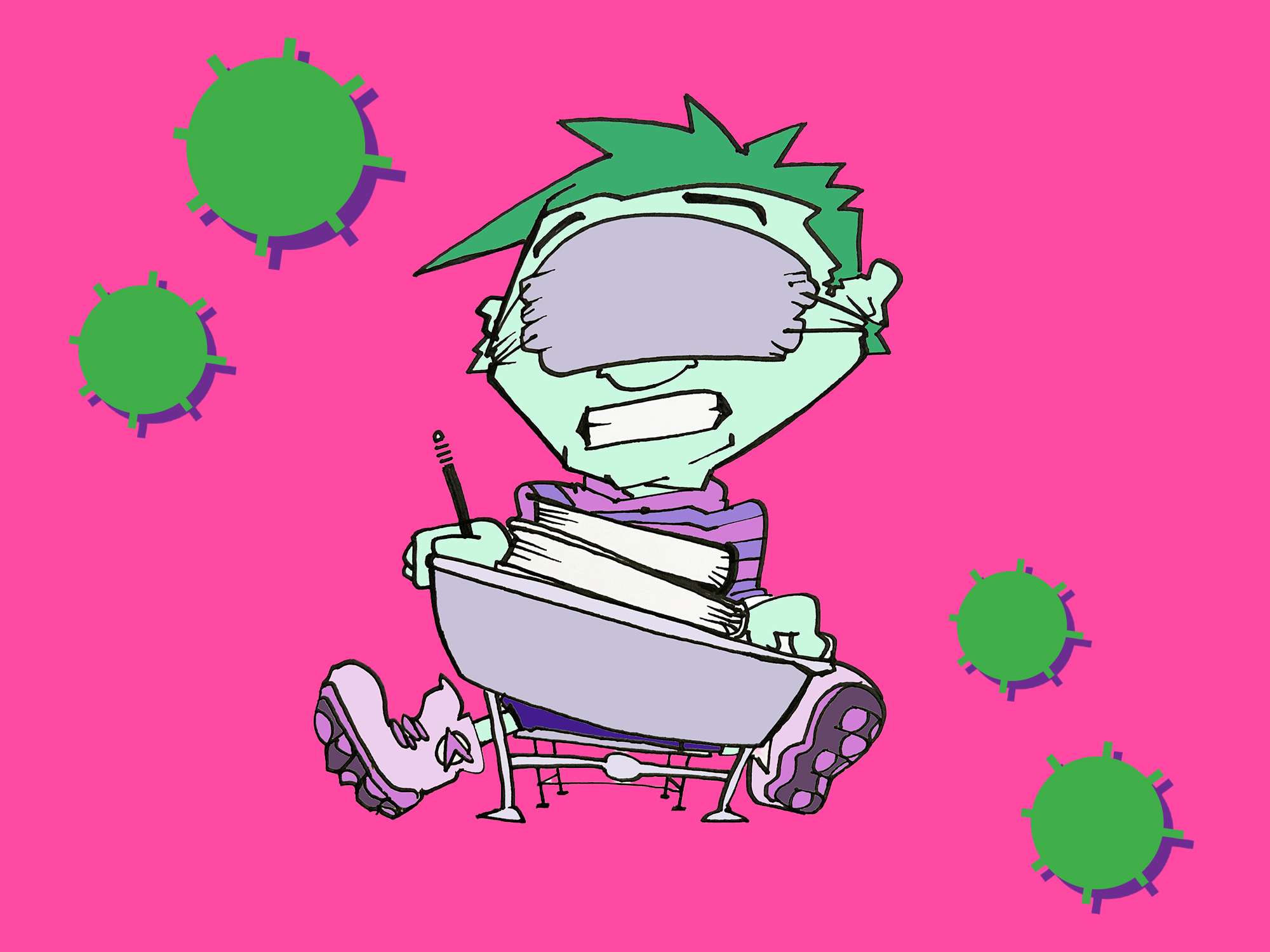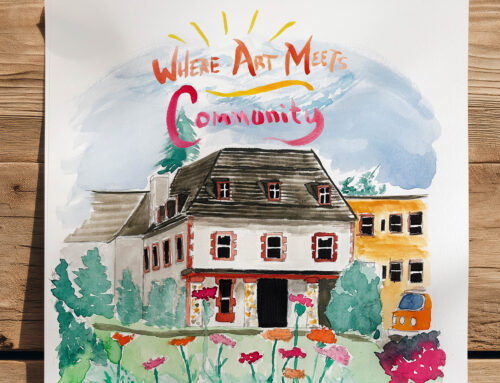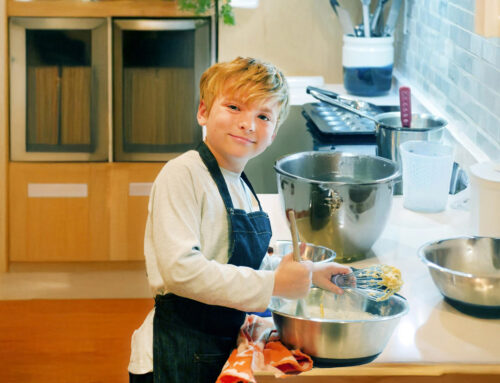According to experts, no.
Post-pandemic, most kids are falling behind,
and parents are being kept in the dark.
By Gia Miller
Artwork by Justin Negard
Ready for a head scratcher? According to a report published in February 2025 by researchers at Harvard’s Center for Education Policy Research, Stanford’s Educational Opportunity Project and Dartmouth College, students are now further behind in reading than they were in 2022. Let that sink in for a moment. Back when many students were still learning remotely, they were doing better than they are now.
That same report, called the Education Recovery Scorecard (ERS), also says the average American student is now almost half a grade level behind in math and reading. Still finding this hard to believe? The ERS combines scores from the National Assessment of Educational Progress (NAEP) and state tests from more than 8,000 districts, so it’s considered a solid measurement of where students are around the country.
Okay, so maybe we’ve convinced you of the report’s validity, but you know your child or their school is not part of this national trend. Your child has good grades, and the teachers haven’t reached out to express concern, so there’s no problem, right? Wrong. Your child could still be behind. According to the ERS, many teachers have adopted more lenient grading policies since COVID-19 and distance learning because they would rather not punish their students for pandemic-related struggles. And they’re not reaching out to their parents.
In a January 2025 article published in Education Week, Thomas Kane, a professor at the Harvard Graduate School of Education, says that because parents don’t have access to the same grade-level data as teachers, which demonstrates how students are doing now compared to before the pandemic, parents probably don’t know their child is behind. “It’s easy to see how they might be under the impression that everything’s fine,” he says.
As you slowly come around to the reality that your child might not be doing as well as you thought, you might also wonder why this is happening. And can you fix it? The answer is not so simple.
A social-emotional reality check
Several studies published in 2024 and 2025 conclude that students are experiencing long-lasting mental health effects from the pandemic. And there’s plenty of research that proves anxiety and depression have a negative impact on academic performance, regardless of a student’s age. But it’s more complicated than simply concluding the pandemic caused a mental health crisis, leading to a decrease in overall learning, because there are plenty of students who thrived during the pandemic and struggled when they returned to the classroom. And there are many other during- and post-pandemic situations as well.
“That’s why COVID-19 was such a disaster for the education system,” says Kristen Mazzella, a clinical resident at Pleasantville Wellness Group. “It’s difficult to figure out exactly why some of the kids who were thriving during the pandemic began struggling when they returned while others who thrived continued doing well. Or, why some kids barely showed up during distance learning and don’t seem to be behind at all. It’s so all over the place, making it really difficult for the education system to get all students back on track when everyone responded so differently.”
But Deborah Hardy, who spent over 24 years as a school guidance counselor before opening GuidED College Counseling in 2016, believes the pandemic amplified issues that preteens and teens experienced for many years prior to the global shutdown. “I don’t think we can blame COVID-19 for anything,” she says. “I’m not disrespecting what we went through, but what COVID did was, in my opinion, unravel two problems that were hidden in plain sight: struggles with social-emotional well-being and struggles with academics.”
“We all have some sort of anxiety,” Hardy continues. “But it became a label; everybody ‘had anxiety’ because we were isolated. But people finally began talking about it more publicly.” The fears preteens and teens expressed were not new, according to Hardy. Prior to the pandemic, Hardy’s teenage clients asked her many of these same questions, including:
- How do I handle this problem?
- How do I talk to people in my class?
- How do I talk to adults?
- Why am I always anxious or nervous to do that?
- Can you help me learn how to advocate for my needs?
“It was like a little volcano,” Hardy explains. “Everything exploded at the same time. It’s not that kids didn’t have issues before; it’s just that societal isolation allowed for open conversations and identification of what these social-emotional issues were.”
However, for younger children, Mazzella says, missing out on those formative years of socialization had lasting consequences. “Young children need to make connections with others,” she explains. “They need to have conversations and learn from watching how students and teachers behave. Social isolation prevented that from occurring, and it affected how young kids formed friendships or how they approached other kids to play.”
Mazzella says she’s noticed that elementary school children today are much more hesitant to go over to a kid they don’t know on the playground and ask them to play, and that impacts classroom performance. “It’s much harder for them to make friends within the classroom and work in groups because they don’t know how to communicate with the other group members,” she explains. “Even a simple coloring project requires cooperation and agreeing on what colors should be used where. But instead, because they missed out on such a big part of their social-emotional connections, all they think about is what they want to do. They don’t want to have to think about what anybody else is doing, and they don’t want to talk to anybody else. They just want to do their coloring. They need to hit those developmental milestones to succeed academically, and they’re lagging behind.”
Hitting the books
When it comes to how teens engage in their academics, Hardy believes this is another area the pandemic amplified instead of created. Over the years, she’s noticed a significant shift in students’ mentality towards learning. Students once learned because they were curious; they wanted to know how things worked and how they applied to the real world. But gradually, that desire to learn for the sake of learning transformed into students wanting to learn what they needed to know to pass a Regents exam or an AP test.
And then, COVID-19 happened. Most students found distance learning painfully boring, but, Hardy says, they wanted to learn about things they found interesting. So, they headed to YouTube, the internet, social media or podcasts, educating themselves on everything from how to code and build computers to how to cook or play a musical instrument. “They were engaged,” she explains. “And that began to highlight what the educational system was struggling to do: innovate. I have always been a big proponent of experiential learning, as opposed to just ‘Come in, listen to a lecture, do the homework, take a test and get a grade.’ And it’s not the teachers’ fault; they’re receiving guidance from the administration, which provides them with professional development courses showcasing the latest ‘flavor of the month,’ or in this case, year.”
Without appealing to this new kind of student—the one who is captivated by what they can learn on their phone—students disengage. They don’t study, they don’t do the homework—which Hardy says many view as pointless busywork—and they don’t care because they cannot see how it will be important in their lives. Essentially, they’re bored. “I’ve noticed a lack of interest in learning how to learn and applying what you learn, especially when it doesn’t interest them; they lack critical thinking,” Hardy notes. “And that’s why, I think, teachers see that they have intelligent students, but those students don’t necessarily know how to learn. So, the teachers must repeatedly pause and clarify things, and they have to continually revisit topics to make sure their students are learning the material.”
Hardy believes there is a solution to this problem: teachers need to adapt. “They need to start using their best resource, which is middle school and high school students,” she explains. “They need to survey them on how they think teachers can engage them and how they think they learn best.”
How parents can help
“Parents are kind of scrambling to figure it out for themselves because there’s not a lot of guidance about what parents can do to help,” says Mazzella. “One of the most helpful things is to work on rebuilding routines with your child, including a consistent bedtime and morning schedule for all children, regardless of age. All kids thrive on routines.” Another thing parents can do is to support their child’s mental health. For younger children, Mazzella says you should normalize conversations about feelings. “You don’t have to talk about anything specific,” she says. “It can be as simple as asking them about the best and worst parts of their day.”
For preteens and teens, check in and ask them if there are any subjects they’re struggling with at school, and if it’s not something you can explain, offer to help them by finding an interesting video on the subject that you can watch together. Then review what you’ve learned and look for additional videos about how this topic applies to real life. Alternatively, you can do the same with an AI chatbot. Start by providing the teacher’s or textbook’s explanation or directing it to a website with an accurate description of the topic. Then ask the AI to explain the concept to you like you’re 10 years old. Once you grasp the basics, progress to an explanation for an older child to get a more nuanced understanding. And if those don’t work, suggest they stay after school with their teacher or offer a tutor. It might not remove the boredom they’re experiencing in the classroom, but it will help them better understand the concept.
And, most importantly, you need to have patience. As Mazzella points out, “It’s going to take time; it’s about progress, not perfection.”
This article was published in the September/October 2025 edition of Connect to Northern Westchester.









